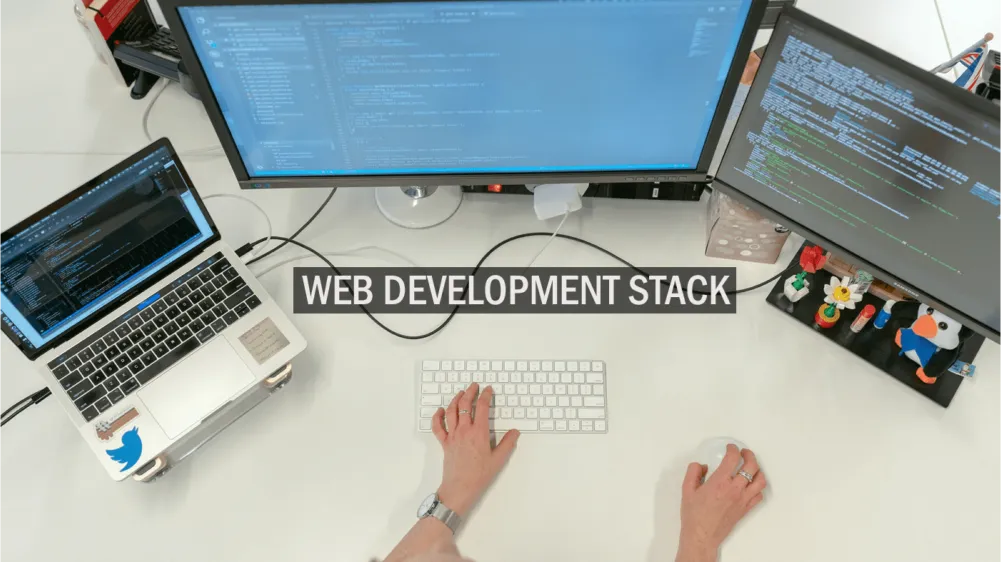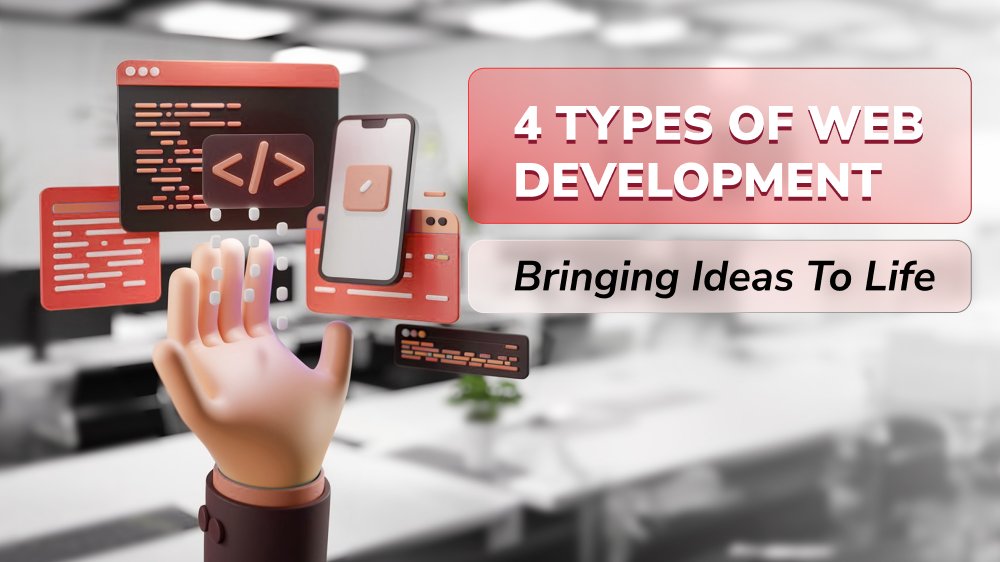Navigating the World of Web Development Stacks

Content Map
More chaptersWith the colorful and booming landscape of the world of developing web pages, it can be challenging to determine which programming language, library, frontend, or backend development to choose. This is when tech stacks come in handy. They are a proven set of technologies that work well together and are behind many of the well-known applications that we all know and use today.
If you are new to web development and need some help navigating it, you’ve come to the right place. Here are all the basics you need to know when it comes to web development stacks, the most common web tech stacks, and how to choose the one that works best for your project.
Key Takeaways:
- Web development stacks are a combination of technologies and tools to build websites or web apps.
- Each web development stack covers three core components: frontend, backend, and database.
- The most popular web development stacks are MEAN, MERN, MEVN, LAMP, PERN, Ruby on Rails, and serverless.
- Web development stacks enhance your development project only when they align with your development vision, technical expertise, and timeline.
What Is a Web Development Stack?

A web development stack, also known as a web stack or solution stack, is the blend of tools and technologies leveraged to create a website or web application. Multiple layers constitute a web development stack. These components are designed to work together seamlessly, allowing web developers to work more efficiently, minimize errors, and speed up the development process. Some web stacks have become industry standards due to their effectiveness and compatibility, and teams often reuse the same stack across multiple projects for consistency.
What Layers Make a Web Development Tech Stack?

Each development stack is made from multiple layers. More than providing tools, each layer works together to create a cohesive, unified application.
Each development stack is typically made from 3 main components:
- Client-side (frontend): Simply put, a client-side is everything displayed on the web app that users can interact with. The front-end layers are the user interface (UI) frameworks, mark-up language, and scripting/ programming language.
- Server-side (backend): While the front end is everything you can see, the server-side handles all the logic behind the scenes. To put it another way, it handles all the requests from the client side. The backend layers include web frameworks, programming languages, web servers, and operating systems.
- Database: A database is basically a well-organized collection of structured information or data. The database management system (DBMS) often manages a database.
The following is a more detailed discussion of each web structure layer mentioned.
Operating System
An operating system is the underlying program that manages all the computer’s operations and resources. The system monitors and controls the execution of the computer’s programs. Windows, Linux, and MacOS are some examples of operating systems.
Server-Side Programming
Server-side programming refers to the programming languages and frameworks that deal with web page content generation, data processing, database querying, and communication with external services and servers.
Examples of server-side programming are Java, Ruby, Node.js, etc.
Client-Side Programming
Client-side programming refers to technologies such as CSS, HTML, and JavaScript, as well as frameworks (For example, React, Vue.JS, and Angular), which are used to create the user interface. This involves any processing requirements that occur on the client (user) machine, e.g., interacting with temporary storage or sending data requests to the server.
Web Server
End user’s requests are processed via a web browser installed on a web server. This communication is done via Hypertext Transfer Protocol (HTTP). The web server stores everything related to HTTP requests, processes them, and delivers the required information to the clients. Nginx, Apache HTTP server, and Microsoft IIS are some examples of web servers.
Database
A database stores and manages the application’s data systematically. Examples of databases include MongoDB, My SQL, and Oracle.
Frontend Frameworks/ Libraries
Frameworks and libraries are among the many tools that can make coding more effective for web developers. As specialized front-end development tools, they provide the essential components needed to make the development process faster and less tedious.
Agular and React are two of many development tools.
Deployment and Infrastructure
The deployment and infrastructure layers are made up of smaller layers, like cloud platforms (Google Cloud), containerization technologies like Docker, monitoring systems, and deployment automation tools.
7 Best Web Development Stacks

Understanding web development stacks is easier with real-life examples. We will discuss seven full-stack development solutions — used to build web applications integrating both frontend and backend in a single codebase.
MEAN
- MongoDB: NoSQL database
- Express.js: Web application framework.
- Angular: Frontend framework.
- Node.js: JavaScript runtime.
MEAN is designed to build apps in JavaScript. This popular technology stack is made of open-source technologies, allowing developers to build both robust and cost-effective applications. This stack is a great choice for building single-page applications as it addresses the building complications while working extremely well together. The stack is suitable for building real-time apps, workflow management tools, to-do and calendar apps, and news aggregation sites.
MERN
- MongoDB: NoSQL database
- Express.js: Web application framework
- React: Frontend library
- Node.js: JavaScript runtime
MERN is very similar to the MEAN stack. The only difference is the frontend library, as MERN utilizes React instead of Angular. Used by developers worldwide, including major players like Netflix and Uber, the components of this tech stack work perfectly with one another. With similar use cases to the MEAN stack, the tech stack facilitates seamless data flow and rapid development, as MongoDB stores JSON data natively, and Express.js makes URL mapping easy while working seamlessly with React.JS.
MEVN
- MongoDB: NoSQL database
- Express.js: Web application framework
- Vue.js: Frontend framework
- Node.js: JavaScript runtime
The last variation of MEAN/ MERN is MEVN. Again, its biggest difference lies in the frontend framework, as this generic software stack model uses Vue.js as its frontend framework. Vue.JS is well-known for being easy to learn and for its versatile ability to create intuitive user interfaces.
Bonus: MEAN vs. MERN vs. MEVN
Being very similar, MEAN, MERN, and MEVN are preferred in different use cases. While it is to only focus on the singular component that differs between these modern web development stacks, it’s better to look at them as a whole.
- MERN is often favored for smaller application projects. Its app deployment is fast and easy.
- MEAN is well-known for its versatility and is suitable for enterprise-level apps. It is often preferred by traditional organizations.
- MEVN is easier to learn and known for being secure due to its end-to-end encryption capabilities. However, when compared to other organizations, it doesn’t receive as much support.
LAMP
- Linux: Operating system
- Apache: Web server
- MySQL: Relational database
- PHP: Server-side scripting language
LAMP stack can be used to create both static and dynamic websites. Used by giants like Shopify and WordPress, this classic tech stack is used for its being open-source, interchangeable components and for boasting a large, supportive community that regularly maintains the public source code. LAMP is used for business logic in code, database components, database processing apps, and more.
PERN
- PostgreSQL: Database
- Express.js: Web application framework
- React: Frontend library
- Node.js: JavaScript runtime
Web developers can build full-stack web apps with CRUD operation. PERN stack has been rising in popularity. PostgreSQL supports NoSQL features, transactional and standard compliant. This is another stack that is free and open-source, but it is also extensible and protects data integrity.
Serverless
Serverless stack, just as its name suggests, builds web apps using serverless technologies. This means developers rely on cloud-based technologies to build apps that are low-cost and easy to maintain. Other strengths of this stack include easy scalability and the natural fit with microservices, allowing the breakdown of complex components into manageable components. Examples of serverless stack components are:
- Frontend: Static web hosting services like AWS, Amplify, or Netlify to deploy and host frontend assets (HTML, CSS, JavaScript.)
- Backend: AWS Lambda, Azure Functions, or Google Cloud Functions are examples of serverless functions.
- API Gateway: Azure API Management or AWS API Gateway are third-party services to allow your frontend to talk to the backend seamlessly.
- Database: There are several serverless databases to choose from, like Azure Cosmos DB or Google Cloud Firestore.
Ruby on Rails
Unlike the previously mentioned tech stack, Ruby on Rails isn’t a combination of multiple web development technologies but a “full-stack framework.” When combined with HTML, CSS, or JavaScript, programmers can use Ruby on Rails to create web apps. This combination of tech is a great choice for its elegant syntax, simplicity, and detailed error log. However, it is often more suitable for lightweight applications, as more complicated projects often require more complicated technology.
Choosing a Web Development Stack: Factors to Consider

Each web development stack is versatile and comes with advantages and disadvantages. Choosing the right stack is paramount to the success of your development project. Here are a few factors you need to keep in mind when choosing a web development stack for your project.
- Project Requirements: What type of app are you building? This will determine the type of technology you need. For example, real-time apps need Node.Js and Webscoket, while content management needs MySQL.
- Scalability: Make sure the stack can grow alongside your business. If your app needs large data volumes in the future, for example, consider MongoDB.
- Team’s Experience: Think of your team’s specialty and leverage what you already have. Let’s say the team is familiar with JavaScript, the MEAN stack would be a great choice.
- Budget: Consider the budget, as open-source tech can help you keep the expenses under control.
- Time-to-market: What does your timeline look like? If you want to shorten time-to-market, stacks with pre-built components might be the way to go.
- Security: Cybersecurity should be one of your top considerations. Java, for example, has strong encryption protocols. Do your homework and decide which one is the best fit.
- Performance: An investigation conducted by the IT agency Portant found that for every second of load time, between zero and five seconds, website conversion rates decrease by 4.42%. Consider this factor to optimize your user experience.
Last Note

Web development stacks are crucial for your web development project. However, what matters just as much is its alignment with your future growth, plans, and team capabilities. It might take some trial and error to find the stack that works best for your team.
If you are tight on time and want the most efficient solution, let Orient Software do all the heavy lifting for you. We are eager to learn about your plans and sort out the tech stack that works best for you while providing you with the right talent to execute the project swiftly and efficiently. Contact us today to find the tech stack made for your organization!







